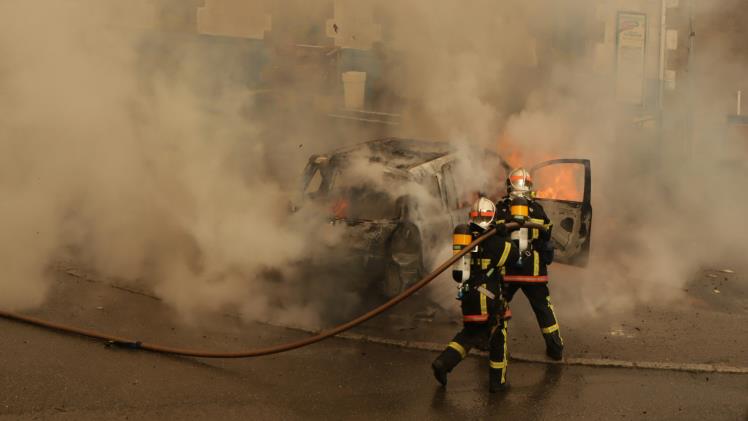The short answer is yes – it’s time we left toxic PFAS behind. For decades, firefighters have relied on aqueous film-forming foam (AFFF) to extinguish dangerous fires. Made with per- and polyfluoroalkyl substances (PFAS), AFFF is incredibly effective at snuffing out flames. However, we now know these “forever chemicals” persist in the environment and accumulate in the human body in disturbing ways.
As science makes the risks posed by even low-level exposures increasingly clear, it’s time to consider whether safer substitute options could allow us to continue protecting lives and property without jeopardizing health or the planet. While change can be challenging, continuing down the current path may soon be seen as an unacceptable health risk.
This article explores why now is the moment to reevaluate our dependence on PFAS-based firefighting foams seriously.
Understanding the Purpose of Firefighting Foam
Firefighting foam is used to extinguish flammable liquid fires. Aqueous film-forming foam (AFFF) is commonly used for fuel fires involving gasoline, oil, or jet fuel. It works by forming an aqueous film that separates the fire from oxygen, cutting off the supply needed to sustain combustion.
AFFF concentrate is diluted with water, typically in a 3% or 6% solution, before use in fire suppression systems, fire trucks, and training facilities. Fluorinated surfactants, such as per- and polyfluoroalkyl substances (PFAS), are its main active constituents. When discharged, the foam mixture forms a thin film on the fuel’s surface to extinguish the fire and prevent re-ignition quickly.
There are two main types of foam used in firefighting. Class A foam is for wood, paper, brush, and vegetation fires. It is often deployed through compressed air systems and used by wildland and structural fire departments.
Class B foam, also called AFFF, is exclusively for flammable liquid fires involving gasoline, oil, or other fuels. As the most effective option, AFFF is standard equipment on vehicles and at facilities dealing with high-hazard liquid fires.
Fire stations may be equipped with Class A foam only or both Class A and Class B foam, depending on their expected fire risks and response needs. AFFF contains PFAS chemicals that are the active fire-suppressing ingredients in its fluorinated surfactants.
The Concerning Effects of AFFF
Concerns about the health effects of per- and polyfluoroalkyl compounds (PFAS) in firefighting foam are emerging. PFAS are hazardous substances that are difficult for the environment or the human body to take in. Cancer and other major health problems have been related to PFAS exposure.
Aqueous film-forming foam (AFFF), used widely in firefighting, contains PFAS. As a result, AFFF is now considered a primary source of PFAS contamination in drinking water supplies. In 2018, Washington State passed legislation restricting the use of AFFF due to health risks from PFAS exposure.
PFAS from firefighting activities can seep into groundwater and contaminate drinking water sources. Common routes of PFAS release include putting out fires, testing fire suppression systems, fire training exercises, and chemical spills.
Once in the environment, PFAS dissolve readily in water and migrate quickly through soil and aquifers. They also do not degrade on their own. As a result, areas exposed to PFAS through firefighting remain at risk of contamination for hundreds or thousands of years.
Long-term exposure to PFAS has been linked to reproductive and immune system effects in humans, as well as increased cancer risk. Researchers estimate that PFAS is present in the blood of nearly every American.
The chemical properties of PFAS that make them effective firefighting agents also allow these toxic compounds to persist indefinitely in people and the natural world, raising serious concerns about threats to public health. Reducing PFAS use and releases from firefighting activities could help limit future contamination of water supplies and exposures for communities.
The substantial health concerns surrounding PFAS exposure from AFFF have also resulted in numerous lawsuits, such as the firefighting foam lawsuit.
According to TorHoerman Law, individuals who were exposed to firefighting foam containing PFAS during their work as firefighters, military personnel, or in other occupations have subsequently developed cancers or other serious illnesses.
Therefore, the victims are now filing product liability lawsuits against manufacturers of AFFF. These legal battles reflect the grave health impacts that PFAS contamination via AFFF continues to have on many individuals and communities.
Five Promising Alternatives for Sustainable Firefighting
As the fire protection industry advances, there is a growing need to find environmentally friendly solutions that can effectively combat fires while minimizing health and environmental risks.
One area of focus is identifying alternatives to aqueous film-forming foam (AFFF), which has come under increased scrutiny due to concerns over substances like perfluoroalkyl and polyfluoroalkyl substances (PFAS). Here are five promising non-AFFF technologies that show potential for the future of sustainable firefighting.
Fluorine-Free Foams
Fluorine-free foams (F3) have emerged as a leading eco-friendly option. Unlike AFFF, F3 does not contain PFAS and has demonstrated an ability to control Class B liquid fuel fires. As F3 use expands globally, it represents an important step toward more responsible fire protection solutions.
Water Mist Systems
Precision water mist technology employs ultra-fine droplets that maximize heat absorption capabilities. Effective against Classes A, B, C, and K fires, water mist is well-suited for structures thanks to fast cooling and oxygen displacement. Its versatility and customizable designs make it a valuable firefighting tool.
Compressed Air Foam Systems
Compressed air foam systems (CAFS) combine water, foam concentrate, and compressed air to create a thick, durable foam. Used in structural firefighting, CAFS excels at rapid cooling and surface adhesion. These benefits have increased CAFS’s popularity for fighting Class A and B fires.
Eco-Gel Additives
Gel additives turn water into a clingy, protective coating when mixed. Products like Eco-Gel are biodegradable, non-toxic alternatives to traditional foams. Eco-Gel’s ability to combat wildfires has garnered interest, while its versatility opens opportunities across various fire scenarios.
Cold Fire Agents
Cold fire suppressants effectively quench Class A, B, D, and K fires through temperature reduction and fuel encapsulation without reignition risk. Qualities like non-toxicity, biodegradability, and corrosion resistance give Cold Fire agents an advantage, finding uses in structure fires as well as wider firefighting roles.
As concerns over AFFF persist, these five non-PFAS solutions represent promising front-runners in the evolution toward environmentally sustainable fire protection. Further advances will continue to shape the green firefighting technologies of the future.
As the risks of PFAS exposure from firefighting foam have become clearer, it is evident that alternative solutions need to be adopted. Newer technologies like fluorine-free foams, water mist systems, compressed air foam systems, eco-gel additives, and cold fire agents show potential as more sustainable options.
They demonstrate comparable or improved firefighting performance while avoiding the environmental and public health issues associated with PFAS. As litigation also reflects the health impacts of AFFF, a transition to non-toxic alternatives could help address these challenges going forward.
The future of the fire protection industry relies on continued innovation toward truly green technologies that protect lives and property without compromising human or environmental well-being.

